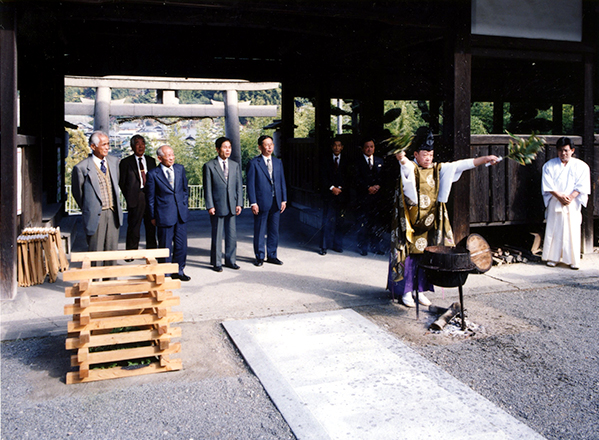Hotaki (Ohitaki) ritual at Hibashiri Jinja Shrine
Rain is essential for farming, and farming is how many people have earned a living in the area since the medieval era. Mentioned in the diary of Kujo Masamoto, the lord of Hinenosho, this ritual event to give thanks for the harvest and pray for protection from misfortune continues to be practiced today.

The Masamoto-ko Tabihikitsuke states that Hibashiri Jinja Shrine was the representative shrine for the Ogi area and was also known by the names “Takimiya Shrine” and “Taki Daimyojin Shrine,” and it contains detailed records of performing arts and Shinto rituals held in the shrine, including dengaku and sarugaku in August in the lunar calendar, hotaki (festival to burn bonfires) by trained Buddhist priests in Inunakisan in November and elegant Buddhist incantations for the Bon Festival of the Dead at the height of summer. It is also reported that at times of severe drought, priests of Shipporyuji Temple prayed for rain at Hibashiri Jinja Shrine and that if that failed, they offered prayers in the seven waterfalls and halls of Shipporyuji Temple and threw impurities such as the heads of deer into the waterfall basins as their final attempt, which eventually led to rainfall.
The ritual event of hotaki, also called “ohitaki” or “oshitaki” locally, has been passed down from Hinenosho in the medieval period and is organized as a ritual to pray for rain around November.






